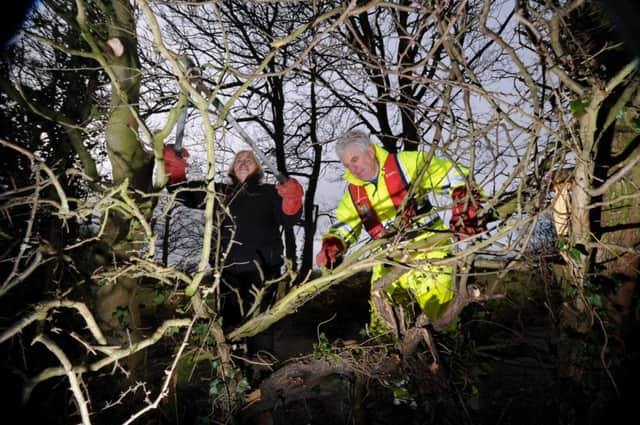Volunteers give hedgerows - and birds - a helping hand


Canal enthusiasts are being trained in the traditional countryside skill of hedge laying in a project supported by the Canal & River Trust and Heritage Craft Alliance.
Yesterday Ripon Canal volunteers got stuck by laying hedges and filling gaps between hedges at the Ripon Racecourse Marina.
Advertisement
Hide AdAdvertisement
Hide AdAnother group will be out today doing similar tasks beside the river Ouse at Naburn and similar projects are expected at canals including the Leeds & Liverpool, the Huddersfield Narrow and the Aire & Calder Navigation.
It is estimated that hedgerows have declined by around 50 per cent since 1945.
A survey funded by the People’s Postcode Lottery recently revealed that over half of hedgerows were in good condition. Around 25 per cent of hedges were thought to be less than 10 years old.
Hawthorn was found to be the most common hedge species along with ash, blackthorn, elder and hazel.
Advertisement
Hide AdAdvertisement
Hide AdJonathan Hart-Woods, for the Canal & River Trust, said: “The growing threat of habitat loss has meant that many of Britain’s most at risk species, including many farmland birds such as grey partridge, yellow hammers, tree sparrows and birds such as song thrush and tree sparrow which will all hopefully benefit from establishing new hedgerow corridors.”
Canalside hedgerows can be over 200 years old and were planted by 18th century canal builders to protect towpaths from livestock. Many were replaced with barbed wire.